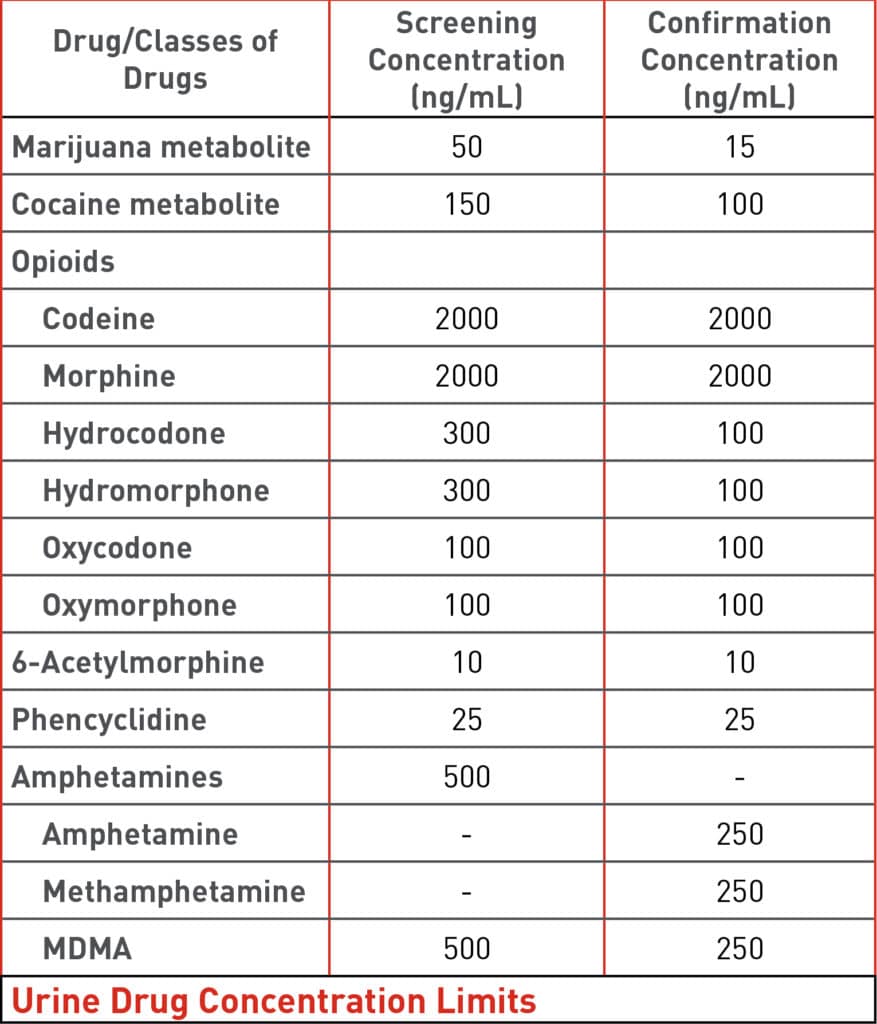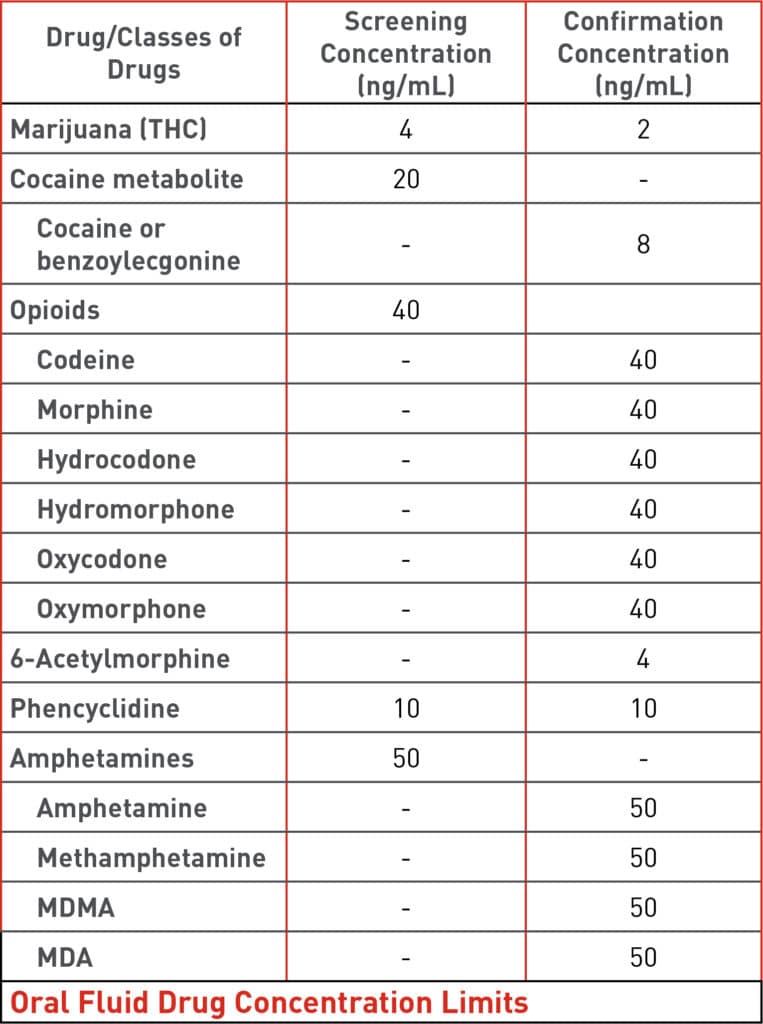
What does “Cut-off level” mean?
Essentially, it means separating the positives from the negatives. In drug and alcohol testing, a cut-off level is a level at which the concentration of a substance in your breath, urine, or saliva, indicates a safety risk. So if your sample tests below the cut off level, your test has a negative result, and if your sample is equal to or above the cut-off, your test result is positive unless otherwise noted by a Medical Review Officer. These cut-off levels are designed to identify a level which indicates a safety risk to the donor, their fellow workers, and their working environment.
The most common and simple example of a cut-off level is the 0.08BAC (80 milligrams or more of alcohol per 100 milliliters of blood) as outlined in the Canadian Criminal Code [1]. If you take a breathalyzer and blow 0.08 or over, you are considered a risk to other drivers and yourself according to the criminal code (each province has their own cut-off levels, which range from 0.04-0.08).
So when it comes to occupational drug and alcohol testing, similar standards have been put forth for alcohol, as well as cannabis, cocaine, opioids, phencyclidine, and amphetamines. These cut-off levels are set by corporate policies and resulted by a laboratory, while point-of-collection devices all come with predetermined screening levels.
How are cut-off levels defined?
The cut-off levels for drug and alcohol tests, whether for urine or oral fluid testing, are determined by companies keeping in mind the capabilities of testing laboratories and available point-of-collection devices. At CannAmm, most clients choose cut-off levels that are based on the Canadian Model for Providing a Safe Workplace [2] and the U.S. Department of Transportation (DOT) [3] concentration limits. There are a number of reasons these levels are set the way they are. First, to set a reasonable standard to ensure employees are safe and fit for duty. Second, to eliminate the possibility of testing positive for second-hand exposure. Third, with a standard such as this, we are able to hold all donors to the same expectations.
Each lab-based urine or lab-based oral fluid test is designed to have two cut-off levels. The first is a “screening concentration”. If the sample tests equal to or in excess of the screening limit, it will be sent for a “confirmation test”. Cut-off levels for each substance are slightly lower than they were in the screening test and provide a quantitative level of the sample to be sent to a Medical Review Officer to be assessed.
The Canadian Model and U.S. DOT provide recommended cut-off levels for the following substances and provide a cut-off level for both screening tests and lab confirmation tests:
- Government of Canada, Department of Justice. (March 18, 2019). “Impaired Driving Laws.” Retrieved from https://www.justice.gc.ca/eng/cj-jp/sidl-rlcfa/
- Construction Owners Association of Alberta & Energy Safety Canada. (July 1, 2018). Alcohol and drug guidelines and work rule: Canadian model for providing a safe workplace, p.6.
- U.S. Department of Transportation. (January 1, 2018). “Drug and Alcohol Testing.” DOT Rule 49 CFR Part 40 Section 40.87. Retrieved from https://www.transportation.gov/odapc/part40/40-87








